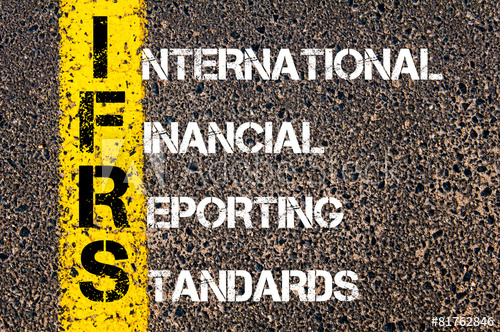IND AS stands for Indian Accounting Standards and are converged standards for International Financial Reporting Standards(IFRS). IND AS are documents and policies that provide principles for the recognition, measurement, treatment, presentation, and disclosures of accounting transactions in Financial Statements.
Before the introduction of IND AS, financial statements were prepared based on Accounting Standards (AS) which were not in line with global standards and principles. Indian Accounting Standards (AS) can be understood as standards for the IFRS (International Financial Reporting Standards) to ensure that Indian Companies are comparable globally. These standards adopted were made mandatory for certain companies. The main objective is to ensure uniformity in financial statements and reports and to make the same user accessible and transparent. The regulatory board is the Accounting Standards Board (ASB) formed in 1977. Before this, India followed IGAAP (Indian Generally Acceptable Accounting Principle).
Indian AS applicability has been recently updated by the Ministry of Corporate Affairs (MCA) at par with the Companies Indian accounting Standards (IND AS) Rules 2015. The application of these rules shall be started from the accounting period of 2016-2017. After that three amendments have been brought to the rules namely in 2016, 2017 and 2018. These standards need to be followed by the company and its auditors while making their audit or financial statements. As on date MCA has notified 41 Ind AS.
Significance of Indian accounting standards
Ind AS facilitate the cross-border flow of money, global listing and global comparability of the financial statements. This, in turn, facilitates global investment and benefits to capital market stakeholders. It enhances the investor’s ability to compare the investments on a global basis. This, in turn, reduces the risk of misjudgements. It also eliminates the costly requirements of reinstatement of financial statements.
Applicability of Indian Accounting standards for all Companies other than Banking Companies, Non-Banking Companies and insurance Companies
| Phases | Financial Year | Listed companies or being in the process of listing | Unlisted companies |
| Phase I | 2016-17 | Net worth Rs. 500 crores or more | Net worth of Rs. 500 crores or more |
| Phase II | 2017-18 | Net worth less than Rs. 500 crores | Net worth of more than Rs. 250 crores but less than Rs. 500 crores |
|
| Holding, Subsidiary, Joint Venture or Associate companies of the companies mentioned above | ||
Applicability of Indian Accounting standards for Non-Banking Finance Companies (NBFCs)
| Phases | Financial Year | Listed companies or being in the process of listing | Unlisted companies |
| Phase III | 2018-19 | Net worth Rs. 500 crores or more | Net worth of Rs. 500 crores or more |
| Phase IV | 2019-20 | Net worth less than Rs. 500 crores | Net worth of more than Rs. 250 crores but less than Rs. 500 crores |
|
| Holding, Subsidiary, Joint Venture or Associate companies of the companies mentioned above | ||
Applicability of Indian Accounting Standards (IND AS) For Banking & Insurance Companies
Banking Companies and Insurance Companies shall apply Ind AS as notified by the Reserve Bank of India (RBI) and Insurance Regulatory Development Authority of India (IRDAI) respectively.
- Banking Companies: Ind AS were applicable to banking companies from April 01, 2018.Reserve Bank of India (RBI) has deferred the applicability of Ind AS on commercial banks (except regional rural banks) by one year. Accordingly, Ind AS for Banking companies would be applicable from April 01, 2019 (instead of April 01, 2018).
- Insurance Companies: Ind AS were applicable to insurance companies from April 01, 2018.Insurance Regulatory and Development Authority of India (IRDAI) deferred the implementation of Ind AS in the insurance sector in India for two years on June 28, 2017. Accordingly, Ind AS for Indian insurance companies would be applicable from April 01, 2020 (instead of April 01, 2018). However, insurance companies would still be required to submit the proforma Ind AS financial statements to IRDAI on a quarterly basis (effective from December 31, 2016).
Benefits of adapting Indian Accounting Standards
- Wider acceptability: Since IND AS are converged form of International Financial Reporting Standards (IFRS) which are globally accepted standards, this move will give confidence to the user of financial statements.
- Comparability of Financials: Financial statements prepared using Ind AS are easily comparable with the financial statements prepared by companies of other countries. For multinational companies, it will be beneficial as it will be able to use the same accounting standards in all the markets in which they operate. This will save the preparation costs of aligning financial statements of an Indian company with other operations.
- Changes in standards as per economic situations: Principles of Ind AS are revised/modified in case there is any major change in the economy. Ind AS 29 is ‘Financial Reporting in Hyperinflationary Economies’ which deals with situations related to inflation.
Disadvantages of adapting IND AS
- Increase the cost of implementation for small business: Large businesses would adopt the cost of adopting Indian Accounting Standards but the small companies may find it difficult to adapt as it will require various costs to implement. It will also require costs to train their employees with new rules and regulations.
- Leads to concern with standard manipulation: The flexibility of IFRS can create numerous benefits, but it also creates a disadvantage with this feature. This structure makes it easier to incorporate profit or revenue manipulation into the findings, making it easier to hide financial problems that might exist. The International Financial Reporting Standards can even lead to fraudulent activities, like changing the method of inventory valuation to make more income come into the profit and loss statement to make it seem like the company is in a better position than it is.
- Requires Global Acceptance: United States have still not adopted this IND AS. Since a majority of the businesses in the U.S. operate locally, the time and expense to implement this system would not make much sense.
Impact of Indian Accounting Standards in Indian Companies:
India has so far followed Indian Generally Accepted Accounting Principles (GAAP). However, from 2017, it will follow Indian AS whose principles are closely based on international accounting standards called IFRS. This will increase comparability of Indian companies with International.
- Higher Revenue, Lower margins and neutral Earnings Per Share.
- Likely to increase employee cost as it mandates the Employee Stock Option (ESOP) at the fair value and not intrinsic value.
- Likely to increase the year end book value of the company. This may lower Return on Equity of high dividend paying companies.
- Companies having high goodwill in balance sheet will see volatilities in their earnings.
- Great volatility in other income as the investments will be valued at fair value.
- High debt to equity ratio and lower EPS as preference dividend will be treated as interest cost and redeemable preference shares as liability
- Could lead to low EPS as the major repair charges will be capitalized.
Consequences of Non-compliance of IND AS
In pursuance of Section 134 (5) of the Companies Act, 2013 the directors have to be confirmed and ensure that the compliance of all applicable laws have been fulfilled. In pursuance of section 134 (8) if a company contravenes the provisions of this section, the company shall be punishable with fine which shall not be less than fifty thousand rupees but which may extend to twenty-five lakh rupees and every officer of the company who is in default shall be punishable with imprisonment for a term which may extend to three years or with fine which shall not be less than fifty thousand rupees but which may extend to five lakh rupees, or with both.
Statements to be presented under IND AS
An entity’s first Ind AS financial statements shall include at least three Balance Sheet, two Statements of profit and loss, two Statements of cash flows and two Statements of changes in equity and related notes, including comparative information for all statements presented.
Conclusion
Indian Accounting Standards (Ind AS) converged with International Financial Reporting Standards (IFRS) has now become a reality. The transition from Indian GAAP to Ind AS is a historic and a landmark change. It is true that the IFRS is expected to dominate the accounting world in India from the year 2016 onwards. Successful Ind AS implementation will require a thorough strategic assessment, a robust step-by-step plan, alignment of resources and training, effective project management as well as smooth integration of the various changes into normal business operations. Finally, the Ind AS implementation exercise needs to establish sustainable processes to continue to produce meaningful information long after the conversion exercise is completed.




